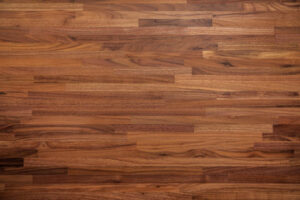Investing in pest control SEO boosts qualified website traffic and grows search visibility. This multifaceted marketing strategy aligns with a pest control company’s most important goals like driving leads, increasing brand awareness, and expanding market reach.
Local campaigns target precise geographic service areas with relevant search queries. Conducting granular keyword research, studying search trends, and updating content on a regular basis establishes relevance with both visitors and algorithms. Contact the Fractional Chief Marketing Officer now!

When customers search online for pest control services, you want your website to be one of the top results. A professional SEO company can help you achieve this goal with content marketing, keyword research, and technical optimization.
Using the right keywords can transform your websites from digital brochures into lead-generating machines. By focusing on user intent, SEO for pest control drives qualified traffic to your site and attracts users who are ready to hire a service provider.
When determining which keywords to target, put yourself in your potential customers’ shoes and think about what terms they might type into Google. Then, create a list of relevant keywords that reflect your products and services. You should also include long-tail keywords that are more specific and generate a higher conversion rate. For example, a long-tail keyword might be “signs of rodent infestation” or “organic pest control services for home.”
After selecting your target keywords, ensure your web pages are properly optimized. This includes ensuring that your target keywords are present in the title tag, meta description, and URL of each page. It’s also important to include your target keywords throughout your content, but be sure not to overdo it. Overusing keywords can hurt your ranking in Google search results.
Lastly, optimize your website for mobile viewing. More and more users are browsing the web on their smartphones, so it’s essential to make your website responsive and easy to navigate on different devices.
A comprehensive SEO strategy takes time to implement, but the rewards are significant. With increased organic rankings, website traffic, and leads, you can grow your business to the next level.
When you partner with a reputable SEO agency, you can trust that they have the expertise to deliver the best results. In addition to boosting your search engine visibility, they can also save you money by handling all aspects of your marketing. In-house teams have limited resources, but a professional agency can manage multiple clients simultaneously and provide access to a full team of experts. They can also offer industry expertise in a variety of digital marketing disciplines, including paid advertising, content creation, and link-building.
On-Page Optimization
If you’re a pest control company, then your main goal is to be found online when potential customers search for specific keywords related to their needs. By optimizing your website and content for those keywords, you can help ensure that your site appears at the forefront of those results. This will ultimately lead to increased visibility and more organic traffic, which can result in an increase in leads and sales for your business.
Mastering the world of SEO can be tricky, but it’s essential for pest control companies who want to thrive in the digital age. By focusing on SEO best practices, such as keyword research, local SEO tactics, on-page optimization, and link building, you can make sure that your business is getting found by the right people at the right time.
On-page optimization is the process of improving elements on your website that are within your control, such as the structure of pages and their content. It also includes ensuring that your website loads quickly and securely and is free from errors. In addition, on-page optimization can include incorporating images into your page content, as well as optimizing those images for loading speed and file size.
Another important aspect of on-page optimization is ensuring that your website’s content is relevant and up to date. Search engines look for websites that are regularly updated with high-quality and valuable content. This is because new content signals to search engines that your site is popular and provides a good resource for users.
As part of your on-page optimization strategy, it’s a good idea to test different types of content, layouts, and calls-to-action to see what strikes a chord with your audience. By continuously testing and refining your content and marketing strategies, you can ensure that your pest control business is thriving in the digital age.
Unlike billboards and newspaper ads, which reach people when they’re not actively looking for pest control services, SEO enables you to connect with potential customers at the precise moment that they need your help. By targeting localized keywords and creating high-quality content that reflects your expertise, you can make sure that you’re attracting the right kind of attention from potential customers.
Link Building
Pest control SEO involves optimizing online content to ensure that when potential customers search for services, your business appears prominently on Search Engine Results Pages (SERPs). Using relevant keywords, high-quality content, and off-page optimization, this strategy helps businesses improve their organic search visibility and generate more qualified leads.
Unlike traditional marketing methods, SEO offers a cost-effective way to meet prospective customers where they are searching – on the internet. Whether they are searching for “pest control near me” or for “how to get rid of ants,” an optimized website will help them find your business, increasing the likelihood of phone calls and bookings.
On-page optimization, also known as on-site SEO, refers to the practices used to optimize web page content to improve its visibility on SERPs. This includes everything from ensuring that your keywords appear frequently enough to making sure your meta tags accurately describe the content of each page. It also includes implementing a well-structured site architecture and submitting an XML sitemap to search engines. In addition, off-page SEO strategies, such as leveraging social media, can be used to support on-page optimization by building links that point to your website.
Off-page SEO involves activities that occur outside of your website but influence its authority and rankings. These activities can include creating relationships with reputable websites in your industry, contributing to blogs or articles, and building external links. Link building is a crucial off-page SEO technique that can significantly impact your organic ranking. For example, if a renowned pest control association or blogger refers to your article as a valuable resource, this can significantly impact your organic ranking and traffic.
An expert partner in SEO for pest control can help your business improve its organic search rankings and grow its customer base. Professionals understand the latest tools and techniques to supercharge natural search visibility and generate more leads. They also have extensive knowledge of the pest control industry and can use this to target prospects effectively. Additionally, they can save you time and money by handling all aspects of the campaign. In addition, they can offer a range of additional digital marketing services, such as website design and development, paid advertising, and local SEO.
Content Creation
Developing engaging and informative content is a key element of SEO for pest control companies. Creating content around common issues that your potential clients face and the solutions you offer can improve your search engine visibility, boost site traffic, and generate leads.
Incorporating keywords into your content helps your website appear in relevant search results, connecting you with customers actively looking for services like termite inspections or eco-friendly pest control. Conducting keyword research using tools like Google Keyword Planner or SEMrush reveals the terms most frequently searched by your target audience. Integrating these keywords throughout your site—from service descriptions to blog posts—strengthens your online presence, driving organic search traffic.
Visual content is another powerful tool for boosting your pest control business’s SEO performance. Experimenting with different types of video, photos, and slideshows can help you create engaging content that showcases your team’s expertise and the efficacy of your services. Adding text overlays to photos and videos can enhance your message and provide search engines with additional information about your content. Optimizing your images with descriptive alt text is also essential, enhancing visibility in image search results while providing accessibility for the visually impaired.
Social media is a vital platform for building authentic connections with your audience and promoting your pest control services. Regularly posting new content to your social pages can increase your visibility in the local community and drive traffic to your website. In addition, proactively responding to comments and messages helps you build trust with your followers and promotes the quality of your work.
Off-page optimization strategies, such as local partnerships and listings in online directories, can enhance your pest control business’s local search visibility. These tactics take time to mature, but over time, can build authority and establish your company as an expert in the industry.
Partnering with a professional SEO agency can greatly reduce the amount of time you spend on marketing and enable you to focus on operating your pest control business. Reputable agencies offer a full suite of creative, technical, and link-building services to supercharge your natural search engine rankings.





